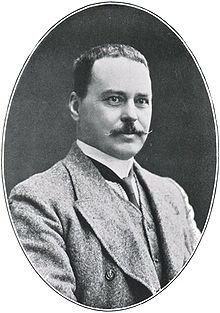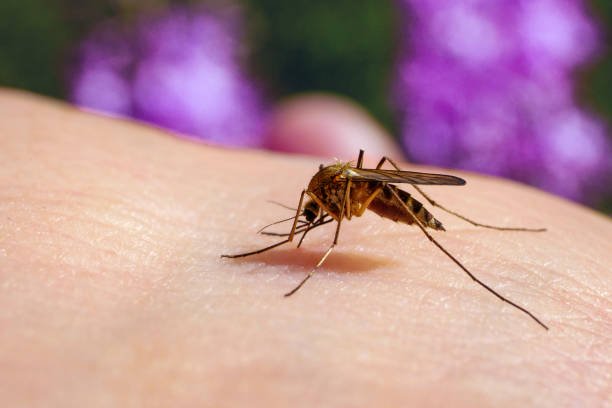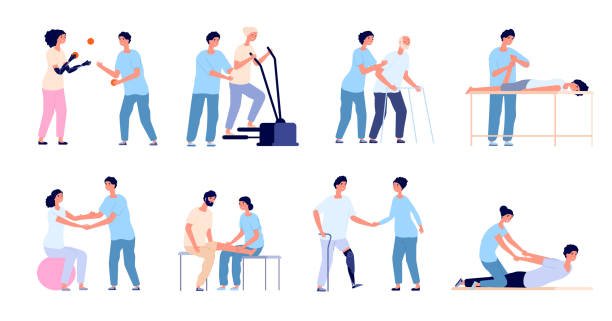Cerebral Malaria
Cerebral Malaria
Read this: The presence of fever with episodes of loss of consciousness not resolving for at least 30 minutes or more with laboratory evaluation reporting the excessive presence of malaria parasites in the blood accompanying series of or episodes of convulsion in a few cases.
You know what the above is called in two words, CEREBRAL MALARIA
Lets go down the history lane, a brief history of malaria including a fallacy that was speculated and written off;
At some point in history, it was speculated that malaria was prompted by breathing the air near swamps(Imagine the number of people that actually believed this then, uhm). However, Ronald Ross, an English medic in 1897 was the first to ascertain that mosquitoes transmit plasmodium constituents that cause malaria, generally referred to as illness(👍Thumbs up to Ronald Ross). He also demonstrated that Anopheles mosquitoes could transfer malaria(another thumbs up👍, deserves an award).
In case you are wondering Who the heck is Ronald Ross?
Answers 👇👇

Ronald Ross ;Image source
Sir Ronald Ross (13 May 1857 – 16 September 1932) was a British medical doctor who received the Nobel Prize for Physiology or Medicine in 1902 for his work on the transmission of malaria, becoming the first British Nobel laureate, and the first born outside Europe. His discovery of the malarial parasite in the gastrointestinal tract of a mosquito in 1897 proved that malaria was transmitted by mosquitoes, and laid the foundation for the method of combating the disease. He was a polymath, writing a number of poems, published several novels, and composed songs. He was also an amateur artist and natural mathematician. He worked in the Indian Medical Service for 25 years. It was during his service that he made the groundbreaking medical discovery. After resigning from his service in India, he joined the faculty of Liverpool School of Tropical Medicine, and continued as Professor and Chairman of Tropical Medicine of the institute for 10 years. In 1926 he became Director-in-Chief of the Ross Institute and Hospital for Tropical Diseases, which was established in honour of his works. He remained there until his death.
Source
Additionally, these findings led to a worldwide kick against "mosquitoes" and a major quest to eradicate malaria. The world health organization (WHO) 1955 issued a plan to eradicate malaria using two drugs "Chloroquine" and possibly "Dichlorodipheny". It failed and the program ended abruptly in 1967. Chloroquine had an antimalaria effective majorly against the falciparum species, but the dosage of chloroquine used in combating malaria was too high, hence, resulting in surged mortality rates. New drugs are now obtainable for chloroquine-resistant areas. Some Nations most especially the United States and the United Kingdom have successfully stopped the spread of malaria, even though Africa and some countries in Asia are not yet free from malaria.
Source
Now what exactly is cerebral malaria ?
Introduction
Cerebral malaria is a serious complication of Plasmodium falciparum infection that most especially affects children and adults with low immunity. It usually develops after the patient had suffered several episodes of fever and may evolve more quickly than predicted. The use of Nonsteroidal anti-inflammatory drugs/Antipyretic drugs solely to treat malaria only favours the occurrence, prevalence, and severity of cerebral malaria (this statement was emboldened by me for a reason).
Epidemiology
•Children majorly between "6 months and 5 years of age" in areas with highly prevalent fever.
• Pregnancy (especially during 1st pregnancy)
• Patients who are immunosuppressed e.g. Sickle Cell patients.
• Poorly managed cases of malaria conditions or episodes of relapsed fever.
• Travellers from non-endemic who have low tolerance against malaria to highly endemic regions, for example, indigenes of the United Kingdom can fall prey to serious cases of malaria fever when they visit African Nations.
• Males and Females have an equal chance of being affected.
•Africa, Asia, and South America are highly prone regions to the transmission of malaria.
Etiology
Cerebral malaria is caused by two causative agents namely:
•Plasmodium falciparum and
•Vivax.
Both contribute severely to recorded cases of cerebral malaria.
Presentations of cerebral malaria in children and young adults included the following but are not limited to:
• Severe episodes of fever
• Sometimes loss of consciousness in some cases
• Continuous convulsion
• Vomiting
• Headache and general body weakness
• Running stools(filled with mucus) continuously in some cases. • Paleness
• Mild or severe shock(shock can soon lead to coma)
• Excessively high body temperature
• Obvious state of dehydration(During fever patients must be advised to drink more fluid or water)
• Severe toning of muscle groups
• It could worsen to a state of "flexion synergy" at both upper and lower extremities.
• The Liver might appear swollen in some cases.
Prognosis
If not treated or poorly co-managed, its mortality rate can be between 10-50% and only about 10% of survivors might usually have symptoms of neurological deficits (due to the presence of convulsion and sometimes coma hence, resulting in neurological deficits). Evident among many elderly patients include sluggish speech, generalized weakness, seizures, and might adversely cause mental impairments in some cases. Hence, factors that impedes prognosis of cerebral malaria might include:
-Age of fewer than 3 years
-A high level of parasitemia
-Multiple convulsion
-Severe anaemia
-Deep prolonged coma
-Delayed commencement of treatment,
-Increased intracranial pressure.
-Pathogenesis
Additional information about CEREBRAL MALARIA 👇👇
Cerebral malaria develops when parasites in the red blood cells adhere to the tiny vessel of the brain causing a blockage in the pathway of the blood. This blockage reduces blood flow, therefore, it leads to a shortage of oxygen and nutrients in those affected areas of the brain.
Some "Hypotheses" also stated that;
- Parasitized cells sticking together and inhibiting blood circulation through capillary beds cause hypoxia.
- The parasite indirectly causes an abnormally high discharge of nitric oxide in the brain resulting in loss of consciousness.
- The red blood cells full of parasite binds to the rhe endothelial cells, thus, obstructing blood flow in the smaller capillaries leading to low tissue perfusion, impaired oxygenation, and tissue damage. - The hyper-inflammatory responses for eliminating Plasmidium falciparum causes edema, dysfunction in the blood-brain barrier, resulting into multiple ltipl organ failure and death.
BLANTYRE COMA SCALE
What is BLANTYRE COMA SCALE and why BLANTYRE COMA SCALE ?
BLANTYRE COMA SCALE is used to check for the severity of Cerebral malaria. The minimum score is '0' while the maximum is '5'. Also, any value below 5 marks abnormality.
EYE MOVEMENT
1– Watches or Follows
0 – Fails to watch or follow
BEST MOTOR RESPONSE
2 – Localizes painful stimulus
1 – Withdraws limb from a painful stimulus 0 – No response
BEST VERBAL RESPONSE
2 – Cries appropriately with pain or if verbal speaks
1 – Moan or abnormal cry with pain
0 – No vocal response to pain.
Using the scale
The score assigned by the Blantyre Coma Scale is a number from 0 to 5. The score is determined by adding the results from three groups: Motor response, verbal response, and eye movement.
The minimum score is 0 which indicates poor results while the maximum is 5 indicating good results. All scores under 5 are considered abnormal
Source
Interventions
1. Pharmacological interventions
2. Medical interventions
3. Physiotherapy interventions
• Pharmacological and Medical interventions:
It involves the prescription of prophylactic drugs, antipyretics,and many more.
Note; NSAIDs (i.e nonsteroidal anti-inflammatory drugs) and other over-the-counter drugs must be discouraged to prevent casees of fever. It is still far better to report to the clinic while feeling sickly or during fever.
Commonly used drugs in these cases may be:
√Mefloquine √Quinine √Sulfadoxine-pyrimethamine √Dihydroartemisinin-piperaquine-trimethoprim-primaquine √Halofantrine √Artemether-lumefantrine √Artemether-amodiaquine √Artemether-mefloquine √Dihyroartermethemisinin-piperaquine
• Physiotherapy interventions:
It centres around working with the Neuro-rehab team to
✓Prevent weakness, atrophy, and or further complications.
Generally, the use of mosquito nets, insecticides, and living in an environment that is completely free of stagnant water can stop the breeding and protect from mosquitos. Ensuring proper hygiene and eating good food which also helps to boost the immune system.
Furthermore, any case or cases of fever should be reported immediately for treatment, whereas, self medications must be strongly discouraged especially among populations prone to cerebral malaria.
Know thy enemy, Know thy self, SAYONARA ✌️
Thanks for reading
References/Resources
Reference 1
Reference 2
Reference 3
Reference 4
Reference 5
Reference 6
Reference 7
Reference 8
Reference 9




https://twitter.com/sam999916/status/1522651157855879177
The rewards earned on this comment will go directly to the person sharing the post on Twitter as long as they are registered with @poshtoken. Sign up at https://hiveposh.com.
Thanks for your contribution to the STEMsocial community. Feel free to join us on discord to get to know the rest of us!
Please consider delegating to the @stemsocial account (85% of the curation rewards are returned).
You may also include @stemsocial as a beneficiary of the rewards of this post to get a stronger support.